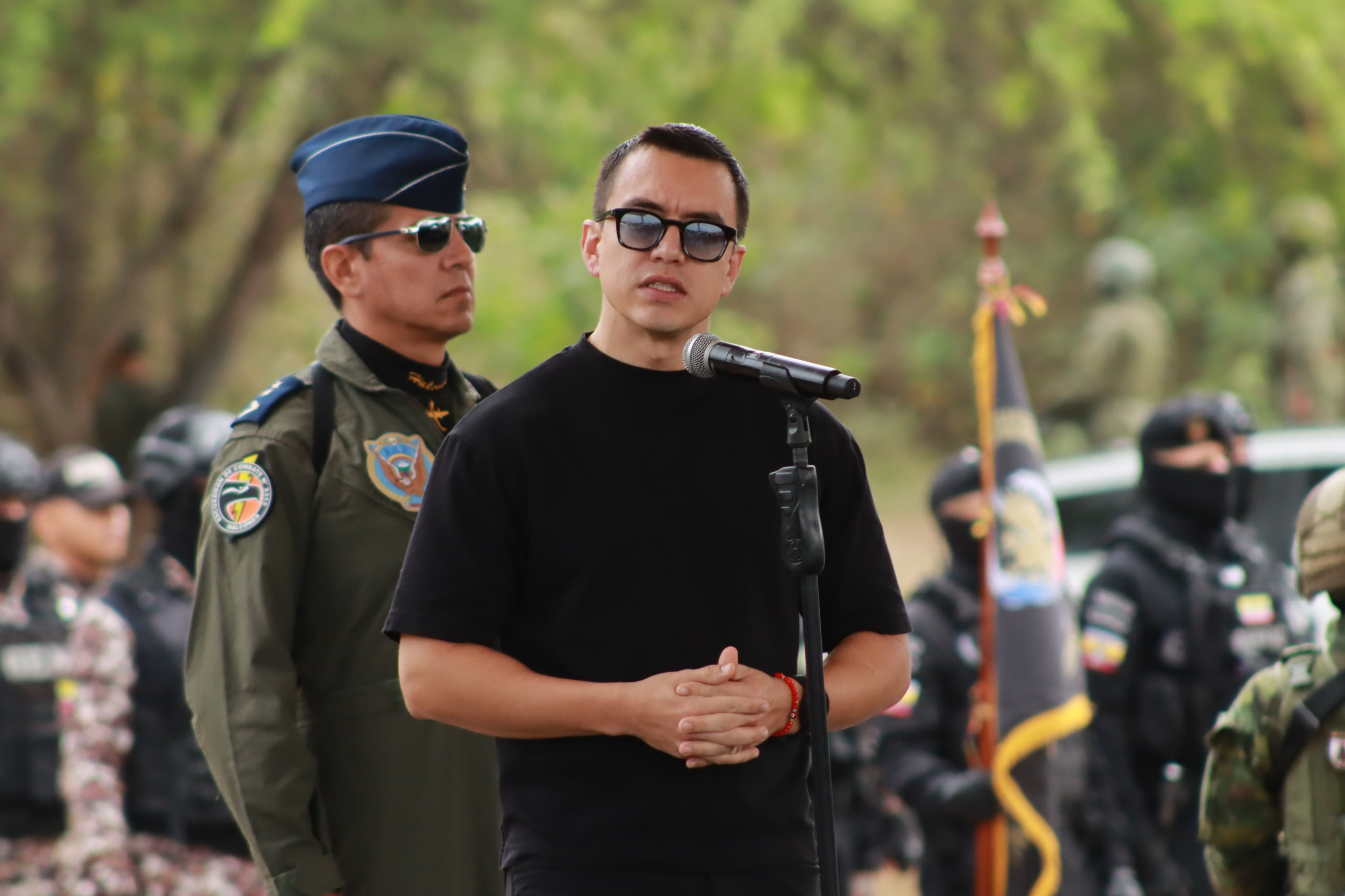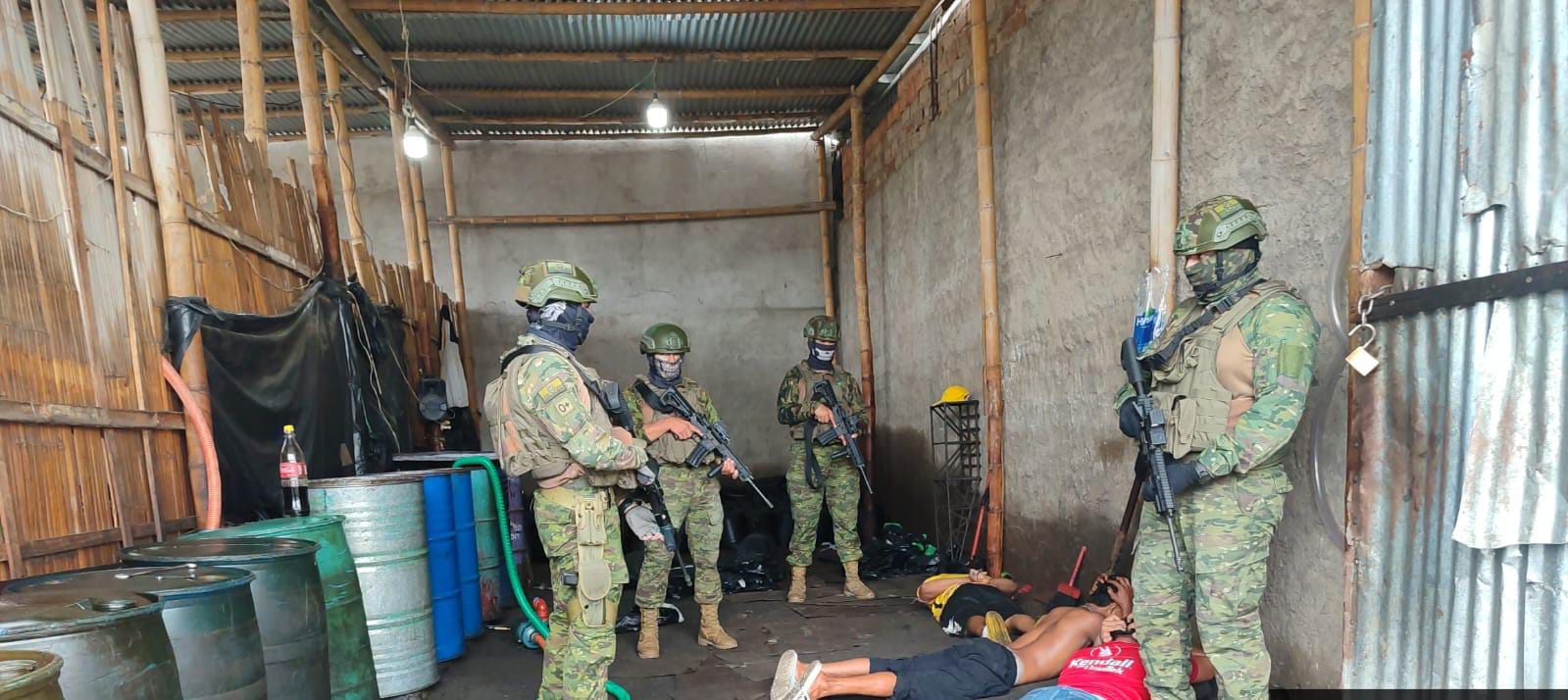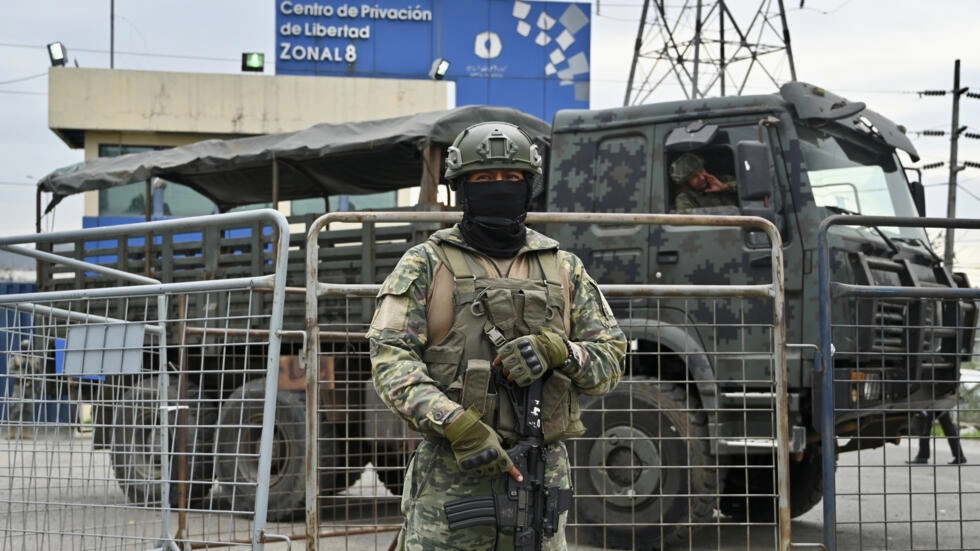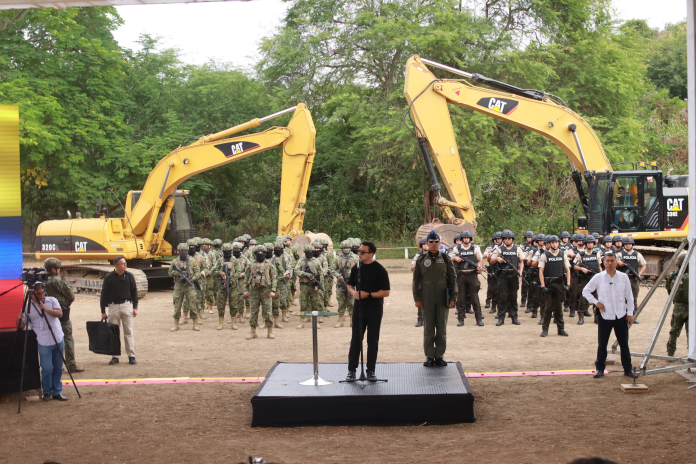Ecuador began construction on the country’s newest maximum security prison on Friday, marking a solid step in President Daniel Noboa’s promise to address the nation’s security concerns. The prison, named El Encuentro and located in the municipality of Santa Elena in the province of the same name, will utilize artificial intelligence in both the prison’s controls and surveillance systems, marking the first instance of AI being incorporated into the Ecuadorian prison system.
A First in National History
The prison is set to cost Ecuador $52 million dollars and will hold an estimated 800 of the country’s most dangerous criminals who are more likely to escape confinement. President Noboa announced the start of the construction, claiming that Ecuador’s prisons system had been “hijacked” by criminal elements who had turned the nation’s prisons into their “centers of operations.”
“Today we mark one of the most important milestones in our fight against terrorism and the mafias that have taken root in our country with impunity for decades,” the president stated in a speech commemorating the construction.

The security protocols that will be implemented in the prison include the iris-based biometric inmate roll call, biometric technology, and high-security devices to control the access of staff and visitors to limited by areas with real-time monitoring, real-time monitoring to improve security and staff management, registration and monitoring of all actions carried out within the prison, constant monitoring of all implemented technologies, a new registration system for those visiting the prison, cellular service and wifi blockers, and an automatic incident report generator.
Each of these systems are intended to limit the power those confined in the new prison may exert over staff and visitors, as leaders of criminal organizations have historically had the ability to control their criminal outfits through coercion of prison staff and the visitation of fellow gang members and family to carry out orders from ringleaders. This increased surveillance will also ensure that prisoners will no longer enjoy a number of luxuries such as those enjoyed by the escaped leader of Los Choneros, Jose “Fito” Macias, who was discovered to have had a minifridge, queen-size bed, and other luxurious accommodations in his cell following his escape from prison in January.

Noboa ended his speech with an appeal to the Ecuadorian people.
“I am crazy for wanting to serve my country. I am crazy for preventing corruption from continuing in Ecuador. I am crazy because I want to give opportunities to our young people who are unemployed and without opportunities. I am crazy because I have ambitious plans. 100,000 scholarships for our young people, for building maximum security prisons, for improving agriculture, for improving a country’s exports. They say I am crazy because I risk my life every day, going to the most difficult places, moving and making headquarters in Manta. This crazy person will make old Ecuador difficult,” yhe president stated.
This portion of Noboa’s speech probably is in regards to recent claims that the president is mentally unfit for office following the release of an article by The New Yorker where the president disparaged multiple Latin American leaders, including the President of El Salvador, Nayib Bukele, Chilean President Gabriel Boric, the President of Argentina Javier Milei, and Colombian President Gustavo Petro. These statements, alongside the president’s apparent desire to construct a prison in Antarctica and belief the Ecuadorian government has security and intelligence support from the CIA and Mossad, have led some to question the mental capacity of the president.

The author of the article, Jon Lee Anderson, speculated that Noboa is on the autism spectrum, claiming that the president would “argue for his point of view in seemingly inexhaustible detail,” when a topic interested him. This diagnosis was allegedly corroborated by a number of the president’s aides, who told Anderson they believed Noboa had some form of autism.
Following these revelations, the Ecuadorian National Assembly approved a resolution to repudiate Noboa’s statements in the article, with assemblyman Blasco Luna stating Noboa’s statements were a “disgrace.” Luna focused on the president’s statement regarding President Petro specifically whom Noboa had called a “left-wing snob” in the article, stating that Colombia has been vital for Ecuador amid the country’s energy crisis due to the sale of energy to Ecuador.
This goals of the passed resolution included the condemnation of Noboa’s statements by the National Assembly, a request for the president to refrain from expressing personal opinions, to extend an official and public apology to the presidents Noboa disparaged, and to order and authoritze the President of the National Assembly to each leader for the Assembly.
Addressing an Ongoing Security Crisis
The construction of the new prison is a part of Noboa’s efforts to crack down on crime across the country, a key promise the president made while campaigning. Originally, Noboa suggested building “prison ships” off the coast of Ecuador to house the country’s most dangerous criminals. This plan has seemingly been sidelined in favor of the construction of traditional prisons, a plan which would likely assist Ecuador over “prison ships” as the country currently faces prison overcrowding with approximately 31,300 people incarcerated in prisons only fit to house 27,500.
Two other “mega-prisons” are already under construction and are set to be completed before Ecuador receives the barges intended to be used as “prison ships.” The construction of these new prisons have drawn comparisons of Noboa to aforementioned President of El Salvador, Nayib Bukele, who constructed the country’s Terrorist Confinement Center (CECOT) to house prisoners amid a large-scale crackdown on gang activity. These comparisons are not limited to the construction of prisons, critics have expressed concerns regarding Noboa’s use of a state of emergency within Ecuador, arguing that Bukele implemented a similar strategy which has led to accusations of authoritarianism.

In another effort to address Ecuador’s security concerns, Noboa passed a number of security reforms in a national referendum that sought to grant the president more power to fight against the various criminal gangs within Ecuador. Between 63 and 70 percent of voters voted in favor of the security measures, some of which include the authorization to expand patrols by military and police units, prevent parole for crimes like kidnapping or terrorism financing, extradite wanted criminals, establish longer sentences for violent crimes, tougher gun restrictions in regions nearby prisons, and authorize the military to use confiscated weapons.
Operations conducted by Ecuadorian authorities have also borne fruit, with authorities announcing the capture of a key leader in Los Choneros in late May while a number of other operations conducted by authorities have met success. The leader, identified as “Mongolo,” allegedly directed and authorized numerous criminal acts within the gang’s structure, while authorities credited his arrest to information obtained from the arrest of an associate identified as Kerly T, who had previously lived with Mongolo.
Ecuador’s security crisis began in earnest following the escape of aforementioned Los Choneros leader, Jose “Fito” Macias, in January. After his escape, Noboa mobilized the nation’s military in an effort to locate the infamous criminal and return him to prison. Following this mobilization, Ecuador’s gangs declared war on the government, launching a series of attacks against both civilians and authorities. Riots in prisons across the country soon broke out, with prisoners capturing 177 guards and other prison staff before releasing video of an execution of one such guard. After the outbreak of violence, President Noboa issued a presidential decree that recognized “the existence of an internal armed conflict,” classifying the gangs as terrorist organizations.

The gangs classified as terrorists include Los Choneros and two gangs within Los Choneros’ rival criminal alliance, New Generation, Los Chone Killers and the Tiguerones, among other lesser gangs within Ecuador’s criminal underworld.
Vital to understanding Ecuador’s recent security woes is the connection of the country’s criminal elements to Mexican cartels, the Sinaloa Cartel and Jalisco Cartel New Generation (CJNG). The Sinaloa Cartel is believed to be supporting Los Choneros whereas CJNG supports Second Generation, a coalition of gangs previously subserviently to Los Choneros prior to a massive attack against Los Choneros in 2021 in prisons across the country that killed a large number of the gang’s leadership. After the attack, Ecuador’s government sought to curb gang violence within the penal system by separating the various gangs active within prison. This move, while effective at curbing violence in prison, further strengthened New Generation, allowing gangs to plan and commit criminal actions with little to no interference in a similar fashion seen in El Salvador’s MS-13 and Barrio-18 gangs.
Violence continues to be a major issue within Ecuador, as the security situation within the country seems to have no end. Currently, Fito, who is often seen as the catalyst for the outbreak of violence, remains at large, with authorities working to uncover the fugitive’s location and facilitate his recapture.

